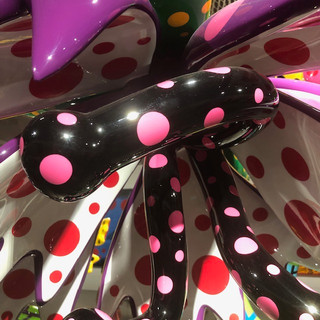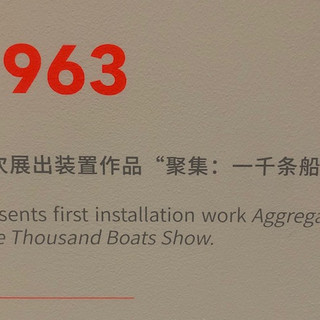All About Love Speaks Forever in Shanghai
- Carol Anne Jones

- Apr 13, 2019
- 2 min read
Updated: Aug 24, 2020
Travel broadens the mind as the saying goes, and last weekend I was in Shanghai. As a visitor it seems like a very cosmopolitan city and luckily the Yakoi Kusama exhibition was on at the Fosun Foundation, a non-profit organization located in the Bund Finance Centre; so I got to see it despite the long lines and the exhibition’s popularity. The exhibition featured 42 artworks that present Kusama’s symbolic motifs including the infamous pumpkins, mirror rooms, polka dots and her immersive installations.
Yakoi was born in 1929 in Matsumoto City, Japan, and formally trained in Nihonga traditional Japanese painting at the Kyoto Municipal School of Arts and Crafts, and at a young age she first experienced visual and auditory hallucinations where she heard plants and animals speak. From these experiences she began to express herself through art making where she found happiness through the repetitive acts of painting and drawing. In 1957 Yakoi went to the US where she began to present large infinity net paintings, a variety of soft sculpture as well as organising happenings and developing large scale installations comprised of mirrors and electric lights. Her diverse works span painting, sculpture, installations, novels, poems, film and performance which resist categorisation but have been affiliated with the Minimalism, Pop Art Zero and Nui movements.
It’s difficult to talk about Yakoi without mentioning her mental health. After living in New York for much of her adult life, Yakoi returned to Japan in 1973 and in 1977 was committed to a psychiatric hospital where she’s been living ever since. Although it’s believed she entered voluntarily she’s stated in multiple interviews that this was not the case but is allowed to work on her art at a studio across the street from the hospital and writes novels in her room at night.
There is no official statement as to whether Yakoi’s condition involves co-occurring physical and psychiatric disorders or whether one type preceded and determined the onset of the other. The statements she’s made through the years seem to indicate that her psychiatric symptoms both preceded and superseded her physical problems and therefore it’s likely she’s suffering from some sort of bipolar disorder with psychotic symptoms. Additionally, according to her own report she suffers from obsessive-compulsive disorder although there's no actual report from her or others as to examples of classic OCD symptoms she may be manifesting.
It’s interesting to note that recent studies questioning the strength of associations between most types of mental illness and creativity; specifically bipolar disorder, show links to exceptional creative ability and thinking. Some well documented highly creative artists, politicians, writers, musicians, performers and renowned leaders who’ve suffered from mental illness and bipolar disorder are Ernest Hemingway, Winston Churchill, Theodore Roosevelt, Vincent Van Gough, Virginia Woolf, Michael Angelo, Ludwig van Beethoven, Sir Isaac Newton, Judy Garland, Charles Shultz, Robert Schumann and Andy Warhol – to name a few.
The exhibition was an interesting walk through the world of Yakoi.
References:
Fosun Founation exhibition catalogue
Natalie Frank, Ph.D., Former Director, Clinical Psychology Graduate Program







































Comments